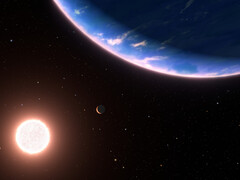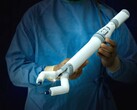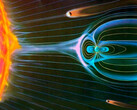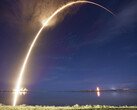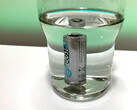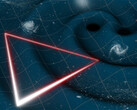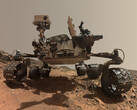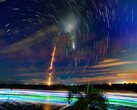Planet GJ 9827d has only just twice the diameter of the Earth. This makes it quite challenging to observe it more closely from a distance of almost exactly 97 light years.
Especially as its central star, a red dwarf, cannot be seen with the naked eye. If it were, the star sign Pisces would have gained a new point.
This rather small exoplanet (click here for more information) has a few special features, apart from its currently poor accessibility. However, at warp 9 it would only take around three weeks to reach it.
GJ 9827d orbits extremely closely and correspondingly quickly around a rather small and dark star. This is the only way to obtain detailed information about this tiny dot. After all, it obscures the light of its sun every six days and provides information about its chemical composition thanks to spectroscopy.
And while such planets should be more reminiscent of Venus or Mercury, i.e. have no atmosphere at all or, above all, carbon dioxide, intensive observations have revealed the presence of water. However, it is not yet clear whether large parts are water or just traces of it.
A total of eleven observations were made over three years, during which the light spectrum could be analyzed. Lo and behold: water vapor must be present on the almost 800 °F (about 400 °C) hot surface. The molecule can be reliably determined using the light spectrum.
Now that the planet has aroused interest, further observations are to follow. The James Webb Space Telescope is able to carry out spectroscopic investigations in the infrared range. This will make it possible to search for other molecules.




